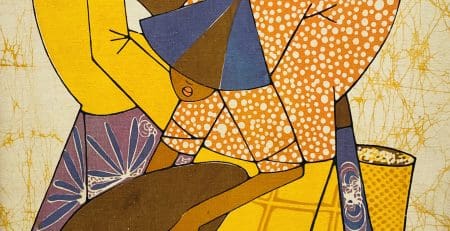How to tell if my Chinese porcelain is antique or valuable
Experience is Key
The way one tells if an Asian piece of porcelain is antique, is through experience.
Often people say:
“Well, how do you know it’s 18th century, or how do you know it’s contemporary and made in last 20 years?”
The best answer, the answer Robert offers and others in his industry offer, is experience.
Robert from PKR Antiques has handled thousands of these objects in every context. So that is how we know. We have touched, felt, looked at and ran our fingers around the foot rim, which is the base of a vase. We have looked at the heap and pile, which is a technique of doing blue underglaze. We have looked at enamel work and how tight the decoration is to the exterior or facade of a vase.
With decades of touching 18th to 20th century vases and identifying them, it is comparable to breathing for someone who does this day-in, day-out. Similarly, it is like the shared experience of going to an auto mechanic or doctor for failing cars or broken bones. They understand and have the wealth of knowledge that the general person wouldn’t, as they are exposed to it eight hours a day, five days a week, for years. Antique dealers in specialized fields, narrow specialized fields, do the same thing. We handle hundreds of objects a month, which are thousands of objects a year, identifying the good, the bad and the indifferent.
Age is not an indication of value
A common misconception is that the older the piece of work is, the more valuable. Where in fact, value is all about scarcity, material and quality. They are again, identified with years of experience and also, identified contextually.
For example, a Southern Chinese 17th-century blue and white provincial bowl made in 1640, may be valued at $40. Yet a bowl from the Republic Period, which is post-1911, painted by a famous enameller or exterior porcelain painter, may be worth several hundred thousand dollars. Therefore, age isn’t necessarily an indication of value.


A Chinese 19/18th century gilt bronze cast and hand chased covered censer.
Demonstrating exceptional hand punched and chase work- it should be noted that every punch mark and detail has been hand worked at bench to show detailed landscape, foliage sprigs and song birds.
The search for the rare
The pieces that are deemed valuable are scarce in numbers. We investigate how many of the objects were made and how many survived. It is quite rare for a piece to be unique, meaning that it is a one-off, standalone object. In most cases, the pieces were produced in large quantities.
In the instance that there are five thousand bowls made but only five a year are seen in the marketplace, a large section of that production may have been destroyed or perhaps, is in private hands or a public institution. As a result, the availability is narrow.
Ming: The magic word in Chinese works of art
The everyday person has once or twice heard the term, ‘Ming’ or ‘Ming Dynasty’. It is possible that it can be associated with being the most valuable. However, this is actually not always the case.
For example, if we are looking at a provincial Southern China bowl made in mass quantities in 1620 or 1640 and it is quite coarsely potted and there may be some sand residue from the kiln. The firing process may have not taken place properly and hence, there are firing imperfections to the body. It is not a sophisticated palette and is deemed as an inferior piece of porcelain.
However, when comparing to a Xuande mark and period bowl done in a heap-and-pile pattern, then that would be a $3 million bowl or $5 million bowl. Once you have them next to one another, most people can see the difference. Value and scarcity have to be viewed through a contextual lens.

An example of a good Guangxu reign mark, tight and uniform. It has conforming pressure and free-flowing calligraphy, all signs of a good mark.

Leave a Reply